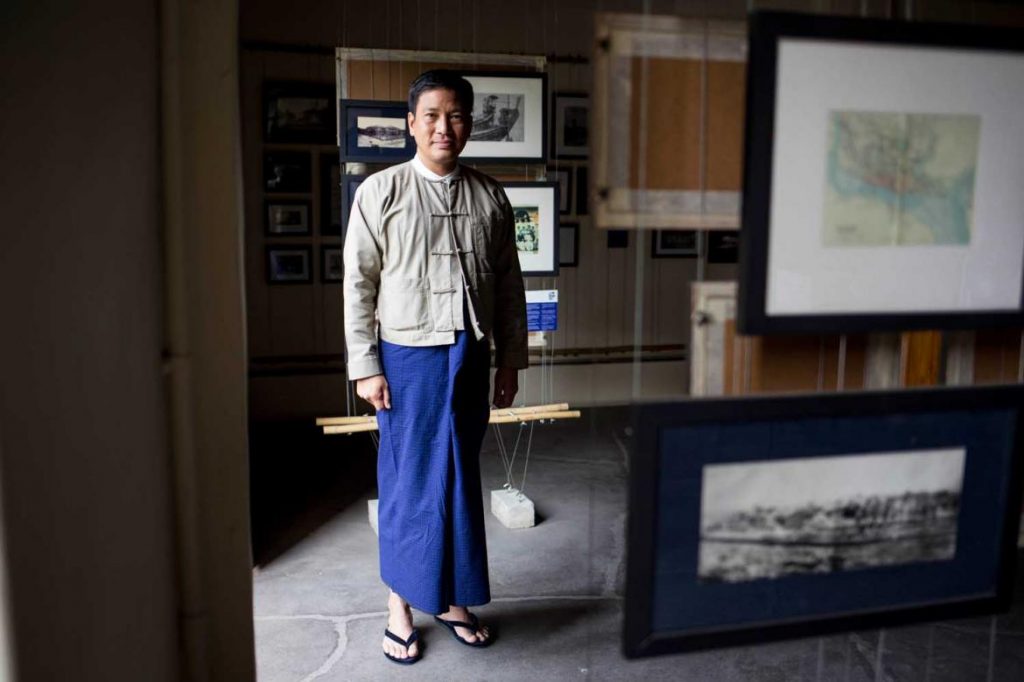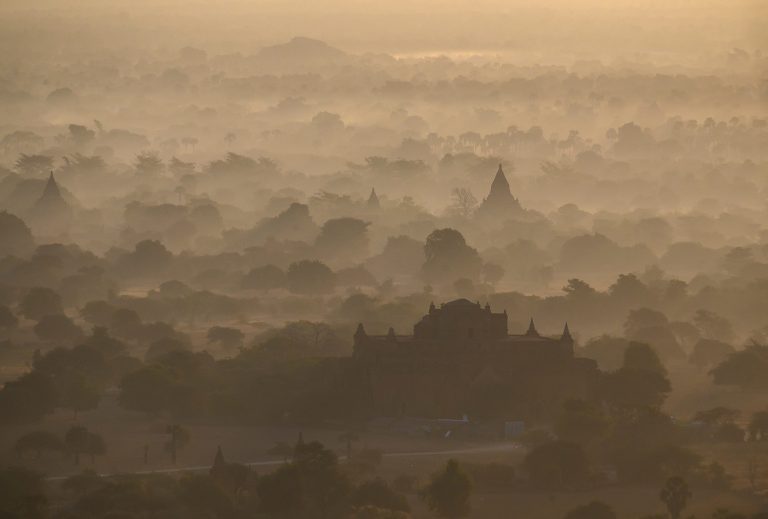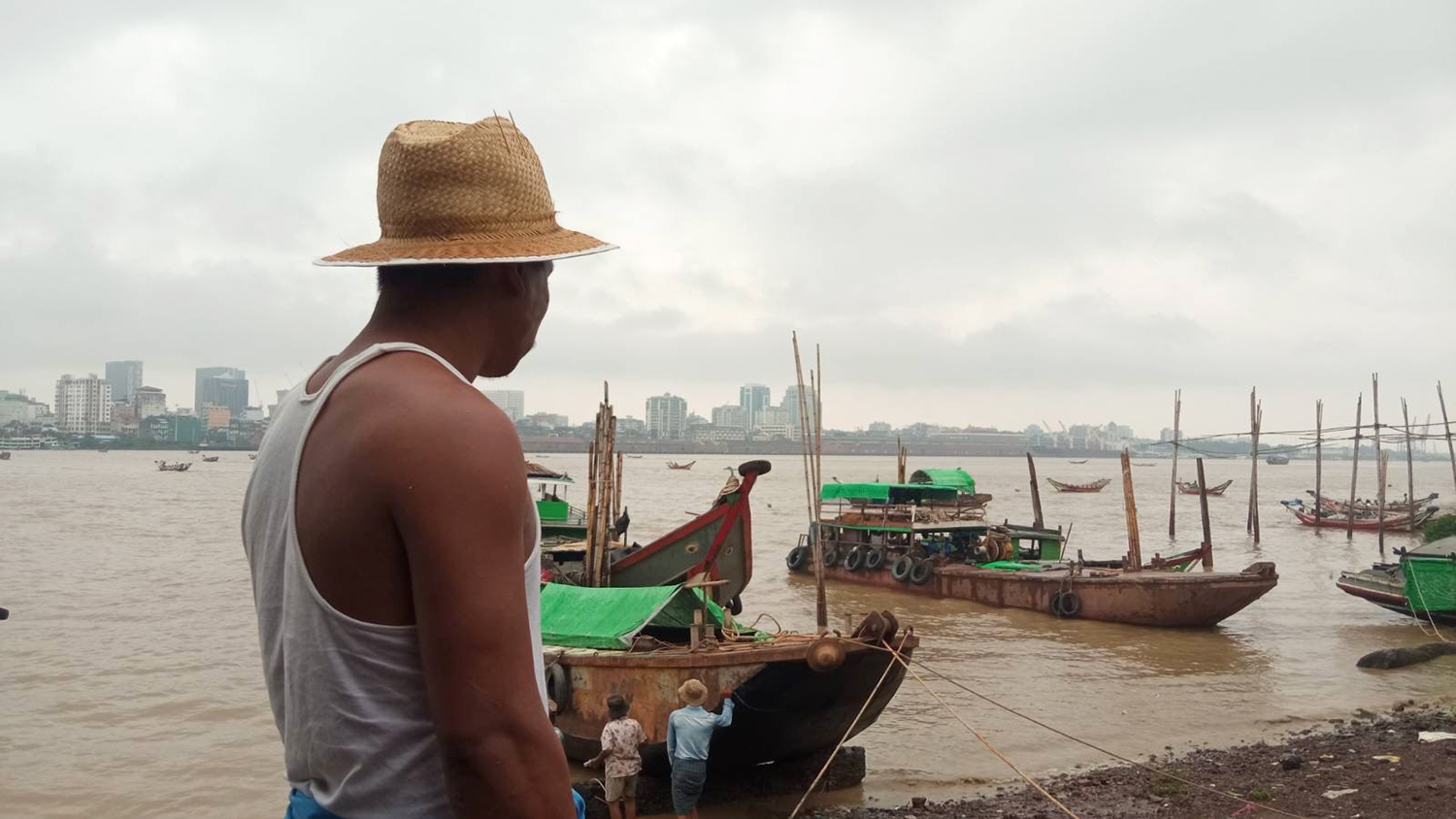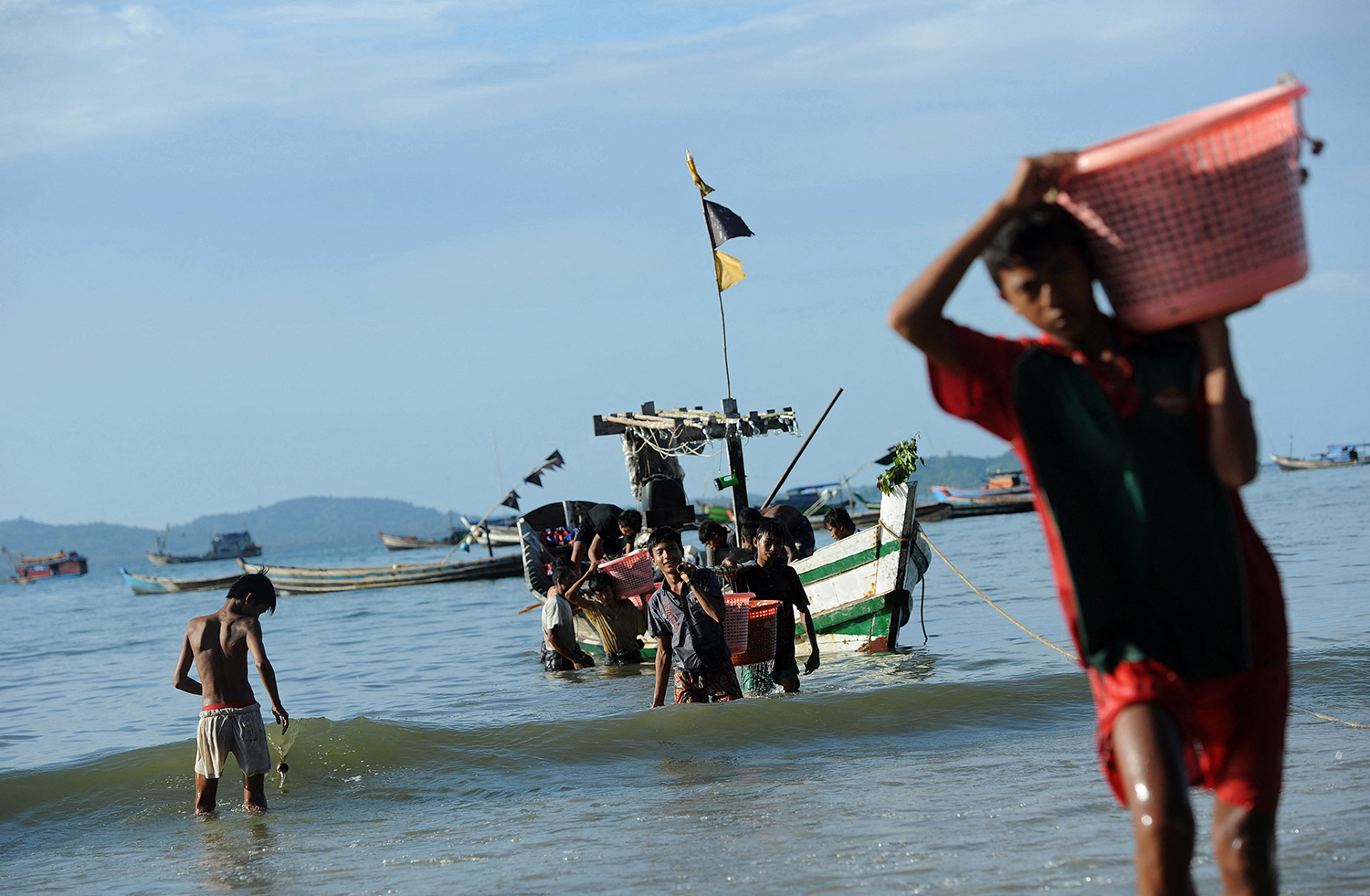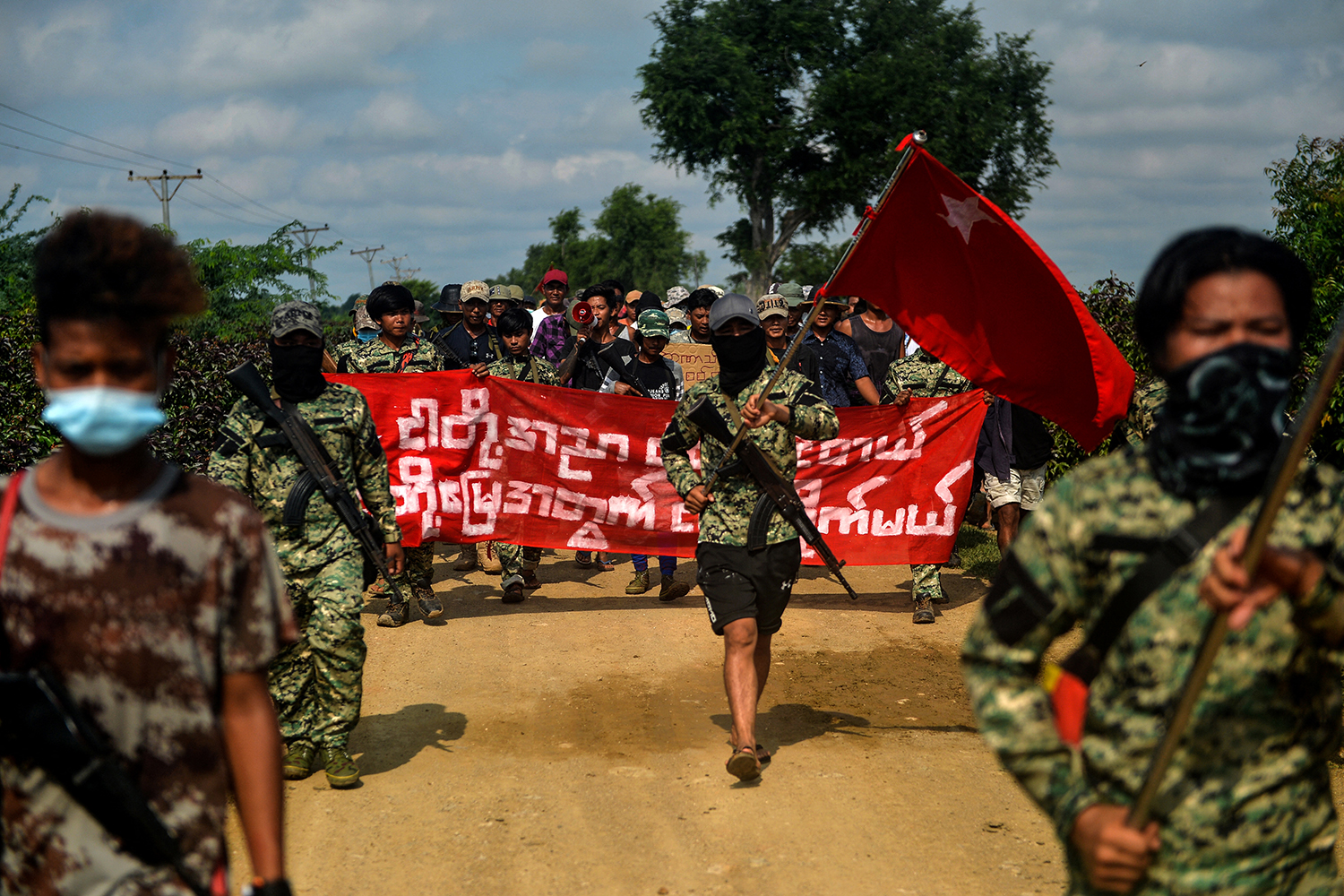Five years ago, a group of architects, historians, businesspeople and others banded together to form the Yangon Heritage Trust in a last-ditch attempt to preserve Yangon’s unique character. While the initial aim was to save the city’s heritage buildings, which were in danger of being torn down, the group’s focus has since expanded to broader questions of urban development.
Frontier’s Thomas Kean spoke to YHT founder Dr Thant Myint-U about the challenges in getting large-scale restoration projects off the ground, the chief minister’s support for the trust’s work and the economic case for preserving the past. (Read our 2015 interview with Thant Myint-U here.)
In early 2012, you told me that you were worried that Yangon’s heritage would be “mindlessly destroyed” as the country’s economy opened up. To what extent have you and your colleagues been able to avert that threat?
We’ve made a lot of progress. Five years ago, no one I spoke to had really given much thought to the idea of protecting Yangon’s built heritage. In the government, no one valued Yangon’s unique architectural legacies. Over 1,000 pre-World War II buildings had been demolished in the 1990s and 2000s. Everyone was gearing up to demolish the rest. Our biggest single achievement has been to radically slow down the pace of demolition.
I think as well that we have made a good case to the public: that our urban heritage a priceless asset and that stitching this urban heritage into the fabric of a dynamic, modern, 21st-century city will be a big part of giving Yangon its competitive edge in the decades to come. What was essentially a non-issue five years ago is now part of government policy.
People already had a sense of Myanmar’s “ancient” heritage. I think we’ve helped people appreciate that there is a “modern” heritage as well that needs to be protected. If we lose this physical link to the 20th century, our ability to imagine the past and the future will be far poorer.
But what becomes of the buildings that have been saved from the wreckers?
We’re still a long way from seeing Yangon’s built heritage integrated into a comprehensive vision for the city, except in the most general or abstract way. There’s a lot of homework to be done.
Few now will say that the several hundred most important buildings from the 19th and early 20th centuries should be knocked down, but that’s not good enough.
Support more independent journalism like this. Sign up to be a Frontier member.
The key challenge remains: agreeing on exactly how these buildings should be used in future and finding the right set of financial schemes for renovation and maintenance. A financial plan – one that must be tied to a broader plan for the revitalisation of the entire historic city, especially the old downtown – is still missing.
Perhaps as important is working with the government and the public in identifying options for integrating our built heritage into a more modern urban landscape. We have hundreds of old buildings and religious sites downtown, especially in Pabedan and Kyauktada townships; we have of course the Shwedagon Pagoda and other lesser heritage sites in other parts of the city; we have the waterfront, and the existing green areas.
The question is, how can we take these incredibly important assets and make them part of a 21st century city? We produced our Yangon Heritage Strategy late last year as our contribution to what we hope will be a continuing conversation.
I have absolutely no doubt that with the right policies the old downtown can become home to many different creative industries – from publishing to IT to design – as well as one of Asia’s premier destinations.
I’ve noticed as well that other cities are beginning to think along these lines. I’ve been invited, for example, to speak in Mandalay in a couple of weeks’ time. Urbanisation is inevitable. Getting our cities right is one of the country’s very top priorities. Building liveable, modern cities that integrate their heritage is really a key to Myanmar’s future success.
What have you not been able to achieve that you hoped you would? It’s striking that none of the really significant colonial-era buildings in the downtown area have been restored yet.
We’ve tried in a hundred different ways over the past five years to start projects involving state-owned buildings downtown, especially some of the more iconic buildings in the Bank Street/Pansodan area.
It’s been very hard, even when the funding is there. And because they are owned by different ministries, it’s been very difficult to move towards the coordinated approach that’s needed. We’ve also seen some inappropriate new development in this same area.
In general though, I think we have to be happy with what we’ve achieved in a very short space of time, and at a time of big competing priorities. We have an excellent team at the Yangon Heritage Trust, which is now a registered Myanmar NGO with an almost all Myanmar staff of young professionals. We have the foundations to do a lot more in future.
Is the situation today as urgent now as it was five years ago?
Yes, because Yangon remains at a tipping point.
The wrong development over the coming years could doom Yangon to the same fate as so many other cities in this region: stripped of its links to the past, with better infrastructure but without any character – a place no one would care to visit or feel any special attachment. Or it can really be an amazing place, that has all the good characteristics of today and be as modern and convenient and liveable as any other city in Asia.
It’s urgent also because I believe the chief minister of Yangon really wants to move things in the right direction. I’ve been very grateful for the attention he’s given to urban conservation, and welcome the many statements he’s made saying that he would like Yangon to be clean and green and modern and a city that protects its heritage. This support from the city’s top leadership means we have an amazing window of opportunity.
Some of the regulatory measures that YHT has proposed and worked towards, such as the zoning plan, have still not been enacted. Why have these proven so difficult to bring to fruition?
Some things are moving ahead quite quickly now and I think within a year one will see changes in the regulatory regime. It’s been difficult because it’s new, and because Myanmar and Yangon were coping with hundreds of new ideas at once, because some people were not ready to accept more than a few new things at a time, and because there were other priorities.
There are vested business interests that will be against one set of regulations or another – as there are in all places – but I don’t think that’s been the overriding problem.
I would also say that over-regulation is definitely not the way to go. Especially on our issues, we need first to focus on public outreach, to help people appreciate the value of their built heritage, and to find the right mix of government policies that will shift incentives.
There’s no financial reason now why a downtown landowner wouldn’t want to tear down his or her beautiful 100-year-old building and build a cheap, high-rise substitute. We need to change thinking but also market incentives.
What’s your view on Yangon Region Chief Minister U Phyo Min Thein’s order to suspend high-rise construction? In the end it looked as though the regional government had to back down to the developers, which raises questions about whether it was a sound policy decision in the first place.
I am 100 percent in favour of high-rise construction in Yangon, in the right places. I’m not familiar with all that went into the initial decision or later changes. What I will say though is this: There are lots of advantages to having a more dense urban landscape, rather than a sprawling low-rise city, not least the cost of infrastructure.
I think Yangon could have hundreds of new high-rise buildings; the city certainly needs millions of square feet in new residential and retail and office space. My concern is simply to keep some parts of the city, such as the historic downtown area and most importantly the environs of the Shwedagon, intact. New high-rise development could be within walking distance.
What do you say to the critics – including many of those developers affected by the high-rise suspension – who argue that YHT is trying to stop Yangon from modernising and getting in the way of development?
I would say they really don’t understand what we have been trying to argue these few years. And perhaps that’s our fault in not reaching out more to some in the business community.
I would also say to them that the most modern, most vibrant, most advanced cities in the world, especially in Europe, are those that have protected and integrated their urban heritage.
New construction without urban planning is the sure route to urban disaster, to an ugly city with unbearable congestion – what we’ve seen in many poor countries around the world. If they want to go in that direction, their own properties won’t be worth much in a decade’s time.
You’ve got allies in the regional government – that will obviously make progress smoother. What do you see as the key challenges now and in the years to come?
Now it’s about helping the government find the right urban planning solutions that will make life better for all of Yangon’s residents. Of course this involves many issues that are beyond YHT’s agenda. But because of Myanmar’s proverbial weakness in “capacity”, it means that we are increasingly drawn to some of these broader issues.
But everything in the end is inter-linked. And this is the thing: There’s no answer to the question, say, of what to do with say the Secretariat or Sofaer building downtown, without thinking more generally for example of downtown revitalisation, the mass transit systems that will link downtown to the rest of the city, or sustainable tourism policies for Yangon.
I don’t think we need a master plan that’s set in stone – that’s a very dated concept. I think we need core principles for how the city should grow and modernise, a flexible framework that will stand the test of time.
TOP PHOTO: Ann Wang | Frontier


